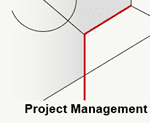
In my previous article, we reviewed the project approval committee, and emphasized approval to start projects and/or approve projects in-process.
With any type of project oversight, presentations or project schedules are often reviewed.
For a more lean project management approach it would help to consider reviewing the actual deliverables, including a mutual understanding of the “definition of done”.
“Definition of done” is the agreed-upon evidence of completion of a process, activity or milestone and usually includes a project deliverable. Some examples of deliverables might include the project plan, project schedule, documents (requirements document, plans, and reports), analysis, and designs (drawings). Other considerations can be built-into “definition of done” including compliance, acceptance/sign-off, exceptions and best practices.
Applying a lean project management perspective, it is worth asking “what is truly value-added with respect to the intent of the deliverable?” Perhaps the outcome of a test can be provided in a data table, which is sufficient to show the test has been completed along with the corresponding results. On the other hand, a document with background, summaries, and explanations may be required for compliance and/or certain agency approvals (a different definition of done).
Also, rather than create a presentation (another non-value added activity), project reviewers could access and review the deliverable, and concur with the completion (and result) of the activity: approval takes place upon review of the actual deliverable(s).
This evidence of completion may need to be sent out to reviewers a few days prior to an approval event to allow enough review time. At the review meeting, reviewers have absorbed the content and are ready to issue their “go”, “no-go” or “redirect” decision with reasons why.
As a result of this outcome-oriented and direct-review approach, project managers might therefore continuously improve their work breakdown structures, deliverables and “definition of done” to ensure mutual understanding of everyone involved. This also contributes to the goal of establishing artifacts (and re-use of artifacts) for future projects.
Most development team-members welcome clarity in deliverables and exactly what comprises completion as the project progresses. Establishing a mutual understanding of “definition of done” can be a significant step in the right direction for lean project management of virtually any type of project.
Leave a Reply